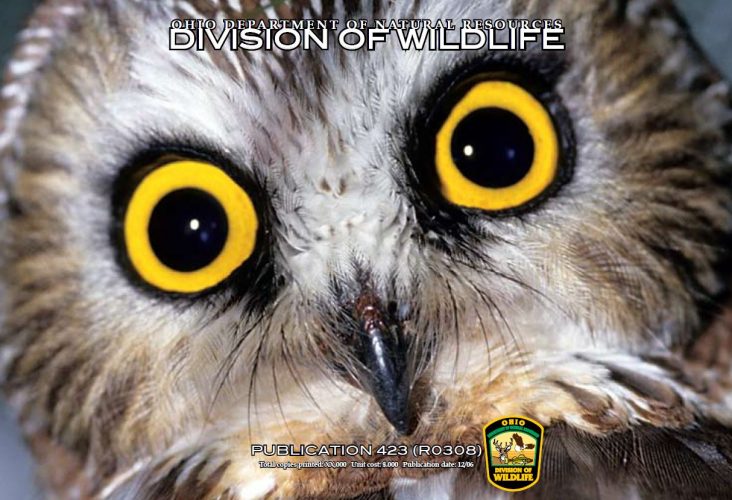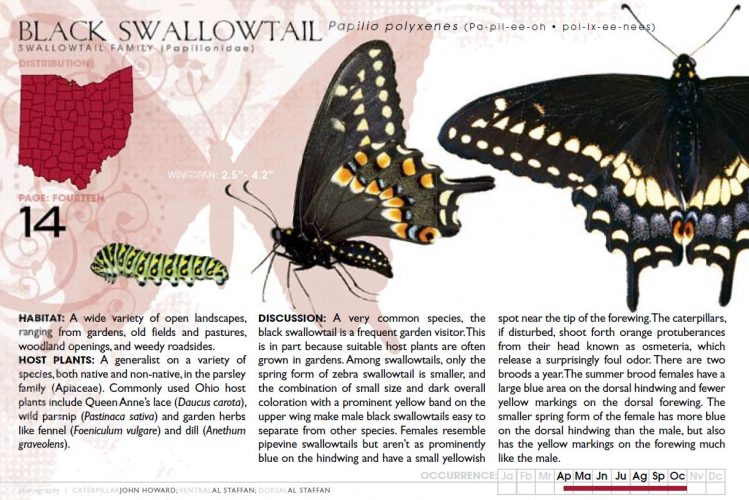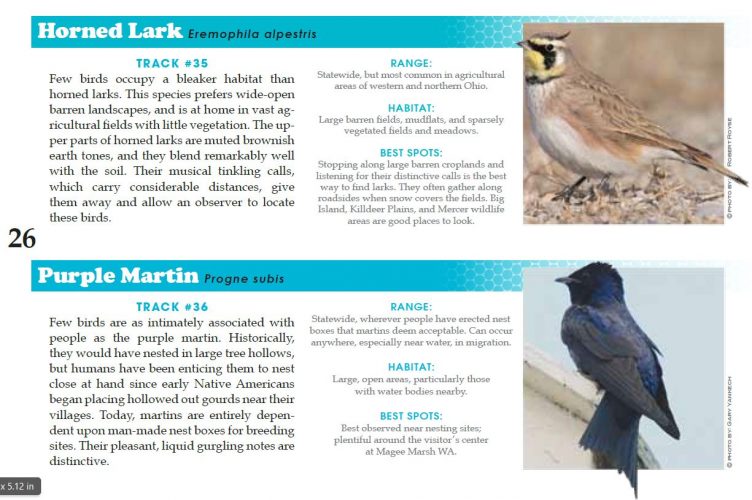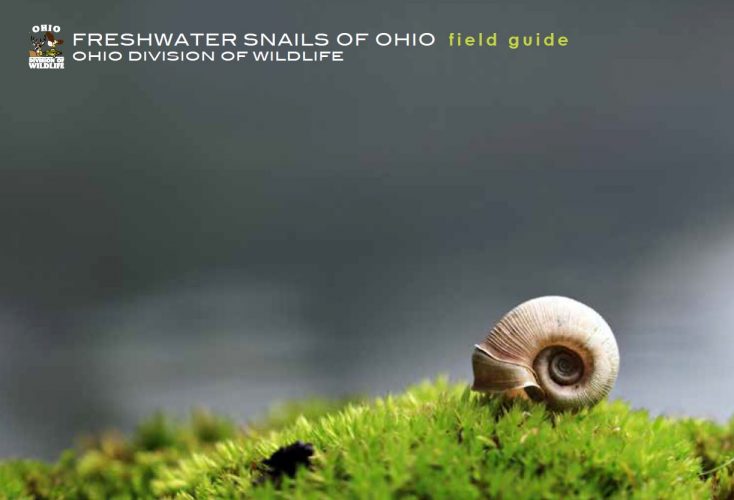Who are the Critters in Your Neighborhood? Field Guides of Ohio

A few weeks ago, we told readers about Ohio’s natural history and shared images of some of the gorgeous flora and fascinating fauna that make Ohio home. You’ve probably seen many of Ohio’s plants, animals and insects in your own backyard, or on walks in your neighborhood, or while out on a drive. Some animals are immediately identifiable – bright red cardinals, whitetail deer, and so on – but others are less so. The Ohio Division of Wildlife, a part of the Ohio Department of Natural Resources (ODNR), has published a collection of gorgeous field guides that can help.

For example, if you’re wondering about that black, yellow and green caterpillar that is eating the parsley in your garden, the Butterflies and Skippers of Ohio Field Guide will tell help you identify the Black Swallowtail. Want to see more butterflies? There’s a map of hot spots at the end of the guide that can help, or you can use the guide to find, and then plant, host plants for the butterflies you would like to attract.
How about that little bird that just came to your garden and ate the caterpillar? You saw a flash of deep blue-black and that was all, but the Common Birds of Ohio Guide might help you identify the Purple Martin. These birds rely on humans to build them houses for nesting and shelter; maybe this sighting will encourage you to build them a home in your backyard.
A handful of the guides – Common Birds, Owls, Warblers and Water Birds – were published as accompaniments to compact discs of the sounds the birds make. Unfortunately, we are unable to make the sound files available through Ohio Memory, but the guides are still chock-full of lovely photos and information on these aviary Ohioans. If you spot one in the wild, you’ll find it in the guide.

The full list of guides is below. Meanwhile, here’s a brief note on how to open downloadable files of the guides: when you click through the link to the guide, you’ll see an image of the cover and, in the corner of that image, there is a blue box with a white, double arrow in it. Click on that blue box and a downloadable PDF of the guide will open up. If you don’t want to download it, no problem; you can still scroll through the guide by launching it as directed above. Now, here’s that list:
- Amphibians of Ohio
- Butterflies and Skippers of Ohio
- Common Bees and Wasps of Ohio
- Common Birds of Ohio
- Common Spiders of Ohio
- Dragonflies and Damselflies of Ohio
- Fresh Water Snails of Ohio
- Lichens of Ohio
- Mammals of Ohio
- Millipedes of Ohio
- Moths of Ohio
- Owls of Ohio
- Raptors of Ohio
- Reptiles of Ohio
- Sport Fish of Ohio
- Spring Wildflowers of Ohio
- Stream Fishes of Ohio
- Trees of Ohio
- Warblers of Ohio
- Water Birds of Ohio
ODNR has also published guides for building nest boxes (hello, purple martin!); for helping injured wildlife; for what to do if you find a coyote in your backyard; and a variety of other topics. With their help, you’ll not only be able to identify, but also to live peacefully with, the critters in your neighborhood.

Thank you to Shannon Kupfer-Trausch, Digital Initiatives Librarian at theState Library of Ohio, for this week’s post!



Leave a Reply
You must be logged in to post a comment.